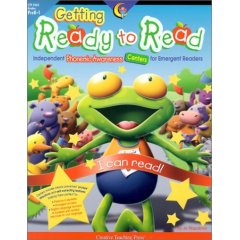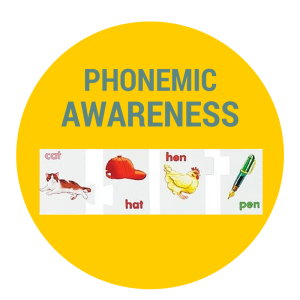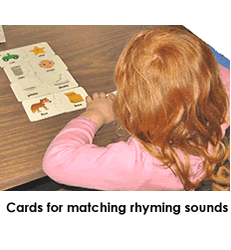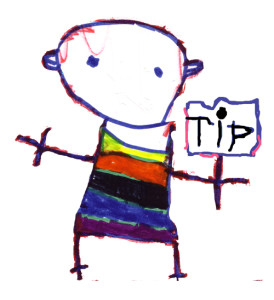Phonemic awareness is the recognition of basic speech sounds. Phonemic awareness activities help young children know that words are made of sounds.
It is the skill of noticing, thinking about and working with individual sounds in words. Separating a spoken word, like cat, into three distinct sounds (or phonemes) requires a child to exercise phonemic awareness.
As children learn to hear, copy and play with separate sounds, they begin to understand letter-sound relationships.
The three kinds of activities below stimulate early literacy in preschool and kindergarten and help children get ready for reading.
Children are learning to:
- hear rhyming words e.g. hit, bit, sit, lit
- break words into syllables e.g. hel i cop ter
- hear some beginning sounds e.g. Peter Pumpkin picked…
- blend sounds together to make words j-um-p
- hear beginning and ending sounds e.g. pen starts with p; ends with n
- delete a beginning or end sound to make a new word. e.g. meat eat or bump bum
- Rhyme
Phonemic awareness early literacy activities are fun for children if you turn them into games. Begin with rhythm and rhyme as it helps children develop auditory discrimination and awareness. There are many commercial games and supplies available for rhyming activities.
Rhyming games
Use your imagination to make up simple games. A stack of rhyming cards and a title is generally enough to hold the students’ attention when teaching phonemic awareness rhyming activities. See the example below.
Game – Build a Rhyming Road
Materials:
- commercial or other rhyming cards
Procedure:
- separate the matching rhyming cards into two piles, one pile would have hat, the other pile would have the matching card, rat
- have the children sit in a circle on the carpet
- give each child a rhyme card from the first pile
- the teacher holds the other matching rhyming cards from the second pile
- the teacher places the first card on the carpet, the child with the matching card places his/her card next to the teacher’s card, starting a row
- as each new teacher rhyming card is placed on the rug, the child with the matching card takes a turn placing his/her card beside it to “build a road”
- the teacher prompts when necessary
- the children like to make the roads twist and turn all over the carpet
Kindergarten children are easily motivated to play games, just change the names and format often to keep their attention.
Rhyming puzzles
Rhyming puzzles also help children to grasp the concept of rhyme. In the beginning of the year, remove all but 4 or 5 sets of cards from the puzzle boxes as some children get overwhelmed by the number of choices a whole box offers.
Pocket chart activities
Use your pocket chart for teaching rhyme. Use pictures that are clearly identifiable to children sitting the farthest away. Sit on the carpet yourself and check the pictures from a student’s viewpoint. Children like to take turns placing their cards next to the correct rhyming cards in the pocket chart. Change the cards with themes, literature and seasons.
The pictures in many rhyming puzzles and games are clear, colorful images and are the perfect size for a pocket chart.
Although the cards and puzzle pieces may be designed for teaching rhyme, the individual picture puzzle pieces can also be used to teach many other aspects of phonemic awareness, such as beginning or ending sounds.
Other areas of phonemic awareness
I have only touched on a small portion of phonemic awareness here. For more information on rhythm, teaching parts of a word, sequencing sounds, separation of sounds and manipulation of sounds I recommend Getting Ready to Read: Independent Phonemic Awareness Centers for Emergent Readers (I Can Read! (Creative Teaching Press).
My class enjoyed playing these games and regular playing of the games ensured that all students got sequential teaching in phonemic awareness.
It is fairly time consuming to make the games but I had a wonderful parent who volunteered to construct and laminate most of the games.


